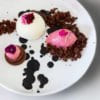Spice It Up! How to Use Spices

Using spices is one of my favorite ways to add a little flair to my cooking. With the right combination of spices, you can turn your standby recipe into an exotic taste adventure. We’ve touched on spices a few times: in a reader question and an introductory blog post. We’ve also seen meals come to life with a mix of the right spices. Since there seems to be some interest, I wanted to expand on the topic and show you how to use spices to take any meal from a 5 to a solid 10.
Getting Started as a Spice Adventurer
If you’re just getting into spices and want to try out a wide range without spending so much or wasting any of it, the following tips will help you.
1. Buy Whole Spices and Grind as Needed
If you make no other changes to your spicing techniques, this alone will increase the taste and quality of your dishes. It will also save you some money since pre-grinded spices are a little more expensive than their whole spice and herb forms. Tip: ethnic grocery aisles usually have cheaper spices.
When you are in charge of grinding, you can adjust the texture to best match your needs, unlike a one size fits all powder, which isn’t really all that interesting, in my opinion. It is really fun to experiment with HOW you grind…you don’t have to always use a spice mill and grind to a fine powder. You can also crush spices by hand with a mortar and pestle for a more rustic texture, or just do a few pulses in the spice mill for a mix of fine and coarsely ground to add crunch. That’s one of my favorite tricks with cumin.
2. Let Go of Your Old Spices
You know those little caddies full of spice powders that seem to decorate most kitchens? I’ll turn around so you can throw them away in private. There is no way to judge how long ago those spices were ground before they even made it to the packaging plant, where the little bottles were then filled and popped into the decorative little carousel. After all this, they languished on a store shelf for some ungodly amount of time before you gave them a good home. Before you learn a single thing about seasoning blends and how to use spices, you need to throw those old ones away.
3. Buy Spices in Small Amounts
My favorite way to buy spices is to buy no more than what I expect to use in a month from the bulk section of the store. Many mainstream stores are beginning to offer bulk spices, such as Whole Foods and Central Market, but you can also usually find bulk spices (for really good prices!) at small ethnic stores or specialty spice markets.
Buying this way ensures you are getting the freshest possible product, as the supply is more likely to be in constant motion than packaged sets of ground spices. It also allows you to customize what’s in your pantry and how long it sits around. Time is definitely the enemy of spices, they definitely go stale, so best to not keep an overabundance sitting around. You can also usually buy empty spice jars in the bulk section, which is a much better way of storing them than in flimsy plastic bags in the pantry. Keep your spices in an airtight container, away from heat and light.
4. Toast Whole Spices Before Grinding Them
Toasting can really bring out a new layer of flavors in spices. Cumin, coriander, cinnamon, and most other “warm” spices can really benefit from good toasting before you grind or crush them, especially if using them in an application like soup or a puree, where they won’t be roasted with the dish. It’s super easy, and really ups the flavor… just throw your spices in a dry pan (no oil) and heat over a high flame.
Shake the pan every now and then to avoid burning. For a light toast, remove the pan from the heat as soon as you smell the spice fragrance wafting through the air, and immediately pour the spices onto a cool, flat surface, like a cookie pan or large plate. If you want to add a little smokiness and deeper flavor, keep the seeds in a pan over the heat until they darken in color and the fragrance becomes a little heavier. Then immediately remove to a cool, flat surface.
Essential Tools For Learning How to Use Spices
Spice Grinder: I like one that has a removable canister so it is easy to wash. This is the one I have, and just adore, but you can use any handheld coffee mill for grinding spices if you don’t want to buy a new gadget. If the receptacle is not removable, you can either just wipe it out really well to clean or grind plain, white rice to neutralize flavors and odors and then wipe it out. Do not put water in coffee or spice mills that have cords attached to them!
Mortar and Pestle: I love crushing my spices by hand for a lot of ethnic recipes that rely on spice layering. Crushing them, rather than zipping in the spice mill, really brings out the oils in the spices so you will actually get a slightly different character than using an electric mill. The texture will definitely be rougher and more rustic, but sometimes that is the goal. Lightly crushing spices will also help release their flavor if you’re going to be infusing something that will then be strained.
Stainless Steel or Cast Iron Pan: whatever you do, do NOT toast spices in a non-stick pan. The temperature you will get the dry pan up to in order to toast the spices will likely start to fry whatever coating is on your pan, and not only cause a really foul odor but also potentially release toxins into the air your breathing, the spices you are toasting, and compromise the non-stick qualities of the pan you’re using. Cast iron will take longer to heat up but will provide the most even toast. Stainless steel also works dandy, just keep an eye on it, because your spices can scorch quite quickly.
How to Use Spices
- Add most spices at the beginning of cooking so that they have a longer time to release their flavors.
- Always remember to reduce the salt quantity in your food while cooking with spices like curry and cinnamon so that it doesn’t end up tasting too salty.
- Add spices long before preparing cold dishes
- Avoid putting chili, garlic, curry, or paprika into bubbling hot oil because they could become bitter if you do. I lightly Sautee them so that they release their flavors without losing them. Win-win.
How to Store Spices Correctly
Let’s be honest, when was the last time you gave it a spin and reached for the cumin or coriander only to see them all scrunched up in their jars? My guess is you’ve probably seen it and wondered if there was something wrong with that blend. I’m here to tell you that there probably wasn’t and the issue may have been how you stored it.
Spices lose potency as they are exposed to air, so the more intact and protected they are (i.e. whole versus ground) the longer they will keep the optimal flavor. So how do store spices correctly so that they don’t lose their potency? Simple, just follow these Dos and Don’ts of spice storage:
Dos
- Store your spices in a cool, dry place. Ensure that the storage temperature is about 70° F.
- Ensure that the temperature of your storage area is kept constant.
Don’ts
- Don’t store your spices in cabinets above the stove. Heat damages spices by drying up the oil that gives each spice its unique flavor. I personally store them on the opposite side of the room.
- Don’t store spices near the window where sunlight can reach them.
- Don’t store your spices in the fridge or freezer because when you take them out, they adjust to room temperature. This can condense the spices, cause the growth of mold, and ultimately damage them.
- Don’t store them on those cute magnetic boards because they tend to heat up quickly when there’s a significant heat source around (the stove or sunlight from the window in this case.
How to Make Your Own Spice Blends
As you will find on this list of spices and their uses, there are hundreds of spices in existence. As a result, there’s probably an infinite number of spices you can make and let’s be realistic, who really has the time to try them all out? Certainly not the spice gurus. Here’s a secret: all over the world, the most seasoned chefs use only a select number of blends to bring out the taste in every meal.
Pay attention to this part because I’m about to show you my top 5 spice blends that can boost just about anything in your kitchen.
1. Chili Spice Blend
Works best with: soups, stews, and sauces.
Ingredients
2 ½ tablespoons chili powder
1 tablespoon of cumin, garlic powder, paprika, onion powder
1/2 tablespoon of oregano
1 teaspoon sea salt and black pepper
2. Jerk Spice Blend
Works best with: seafood, chicken, and vegetables
Ingredients
3 tablespoons of dried minced onion
1 tablespoon of thyme, allspice, black pepper, and cinnamon
1 teaspoon of cayenne pepper and garlic powder
½ teaspoon of sea salt
3. Mediterranean Spice Blend
Works best with: chicken, fish, lamb, and pork to get those tropical flavors you’d otherwise pay a killing for.
Ingredients
2 tablespoons sea salt, basil, and oregano
1 tablespoon parsley, coriander, nutmeg, and dried minced onion
1 teaspoon ground black pepper
4. All-Purpose Spice Blend
Works best with: any meal. Dry food or wet food, it doesn’t matter. When in doubt, go with it.
Ingredients
2 tablespoons onion powder and garlic powder
1 tablespoon paprika, chili powder, and parsley
1 ½ teaspoon ground black pepper
5. Ranch Seasoning Blend
Works best with: finger foods like popcorn, chicken strips and wings, celery, carrot sticks and almost anything else you can think of. It also works well with salads.
Ingredients
2 ½ teaspoons onion powder, garlic powder, and parsley
2 teaspoons dried minced onion and dried dill
1 ½ teaspoons sea salt
1 teaspoon dried chives and black pepper
½ cup dry buttermilk
Instructions
Whisk all ingredients together and transfer them into airtight containers for storage. I use inexpensive mason jars that you can get on Amazon for $20 per 8 jar pack.










